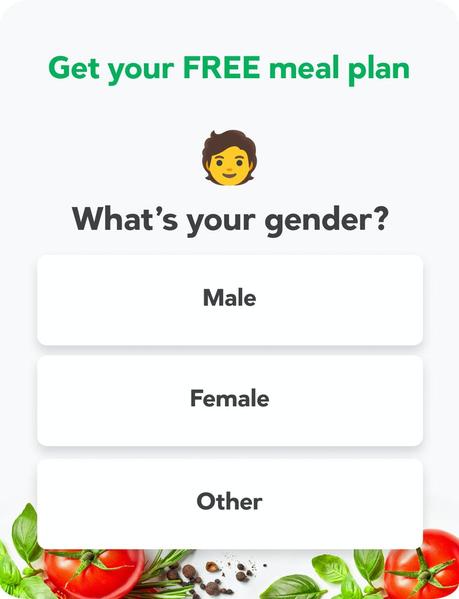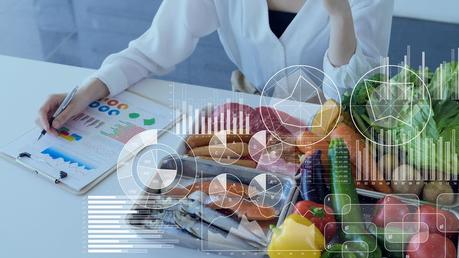Key takeaways
What is the Atkins diet? The Atkins diet is a low-carb diet plan that can help you lose weight without deliberately restricting calories or going hungry. Learn more Get started: foods to eat In phase 1 of the Atkins diet, you focus on eating delicious, filling, low-carb foods like meat, fish, eggs, cheese, fats, and low-carb vegetables. Learn more How and when to add carbs back In phases 2 and 3, you gradually add back some higher-carb foods, such as nuts and berries, based on your progress and personal response to carbs. Learn more
The Atkins diet is a low-carb way of eating that can help people lose weight without feeling hungry or counting calories. Could the Atkins diet plan be right for you?
In this guide, you'll learn all about the Atkins diet and get everything you need to lose weight successfully, including food lists, meal plans, and tips for achieving the best results.

Start your FREE 30-day trial!
Get instant access to healthy low-carb and keto meal plans, fast and easy recipes, weight loss advice from medical experts, and so much more. A healthier life starts now with your free trial!
Start FREE trial!
1. What is the Atkins diet?
The Atkins diet is a low-carbohydrate diet created in the 1960s by Dr. Robert C. Atkins, a physician and cardiologist. Dr. Atkins found that when his patients avoided foods high in carbohydrates (carbs) - such as bread, potatoes, pasta, and fruit - they lost weight easily, without hunger or intentionally restricting calories.
If you believe that weight loss requires self-deprivation, I'm going to teach you otherwise
- Dr. Robert C Atkins
If you believe that weight loss requires self-deprivation, I'm going to teach you otherwise
- Dr. Robert C Atkins
In 1972, Dr. Atkins published his first book, Dr. Atkins' Diet Revolution, followed by Dr. Atkins' New Diet Revolution in 1992, and an updated version with the same name in 2002.
The Atkins diet is essentially a keto diet at the start. But then, over time, it involves adding specific carbs back into your diet until you find your personal carb level that allows you to maintain a healthy weight.
The Atkins diet has four phases:
- Phase 1 (Induction): Eat from a specific list of foods - especially protein foods like seafood, meat, cheese, and eggs - and stay below 20 grams of "net carbs" (total carbs minus fiber) per day. This is the strict keto diet phase. Eating this way leads to ketosis, where your body uses fat as its main fuel. Being in ketosis makes you feel less hungry, so you eat less and lose more weight." Follow phase 1 for a minimum of two weeks.
- Phase 2 (Ongoing weight loss, or OWL): Gradually add back more foods to your diet, 5 grams of net carbs at a time. Follow phase 2 until you're within a few pounds of your goal weight.
- Phase 3 (Pre-maintenance): Experiment with adding back more carbs and fine-tuning your carb intake based on your progress. Follow phase 3 until you're at your weight loss goal.
- Phase 4 (Maintenance): Eat within the carb range that allows you to maintain your weight. Follow phase 4 for the rest of your life.
2. Atkins diet food list for phase 1
During phase 1, you'll eat foods with minimal carbs. Although the "allowed" list is somewhat limited, you will still enjoy lots of delicious, filling foods.

Foods to eat freely
Eat as much of the following foods as you need to feel comfortably full (but not stuffed).
Protein:
- Fish and shellfish of all types
- Poultry, such as chicken and turkey
- Fresh meat, such as beef, pork, and lamb
- Processed meat, such as bacon, ham, or sausage
- Eggs
Fat:
- Butter
- Olive oil, coconut oil, and vegetable oils
- Mayonnaise
Other:
- Herbs and spices
- Vinegar (exceptions: balsamic vinegar and flavored vinegars that contain sugar)
Foods to eat in limited amounts
- Above-ground vegetables: 2 to 3 cups per day
- Leafy greens, such as arugula, bok choy, lettuce, romaine, spinach
- Asparagus
- Broccoli
- Cauliflower
- Tomatoes
- And other keto-friendly vegetables
- Full-fat cheese: Up to 4 ounces or 116 grams per day
- Hard and semi-soft cheese, such as cheddar, Swiss, provolone, mozzarella, Monterey Jack, and Gorgonzola
- Soft-ripened cheese, such as Brie and camembert
- Cream cheese
- Heavy cream: Up to 3 tablespoons per day
- Sour cream: Up to 2 tablespoons per day
- Olives: Up to 20 small olives per day
- Avocado: Up to half a small avocado per day
- Lemon or lime juice: Up to 3 tablespoons per day
Beverages to drink
- Water, club soda, or seltzer water with no added sugar
- Coffee or tea, with optional keto-friendly sweetener
- Sugar-free beverages (including diet iced tea and diet soda)
- Broth or bouillon
Tip: Drinking a daily cup or two of broth or bouillon during phase 1 can help minimize or prevent symptoms of the "keto flu", a common set of temporary side effects like headache and fatigue that often occur at the beginning of a very-low-carb diet.
Foods and beverages to avoid
During phase 1, you eat protein, fat, and above-ground vegetables. That means you avoid all foods and beverages not listed above, including:
- Sugar, including honey and syrup
- Sugar-sweetened beverages
- Grains, such as bread, pasta, rice, and cereal
- Fruit juice
- Alcohol
- Below-ground vegetables, such as carrots, beets, and potatoes
- Fruit, including berries
- Nuts and seeds
- Yogurt, cottage cheese, and ricotta cheese
3. Sample Atkins diet menu
Planning meals during phase 1 of the Atkins diet is easy:
Eat it now! Top 3 protein recipes:
- Salmon with pesto & spinach
- Brussels sprouts & hamburger gratin
- Chicken with herb butter
- Salmon with pesto & spinach
- Brussels sprouts & hamburger gratin
- Chicken with herb butter
- Start with a generous serving of protein.
- Add low-carb vegetables as a salad, stir-fry, or side dish
- Include fat for flavor and fullness
Here is a simple seven-day menu for phase 1 of the Atkins diet. Feel free to substitute other foods from the acceptable foods list above, based on your preferences and what you have on hand.
Day 1
Day 2
- Breakfast: Bacon and scrambled eggs
- Lunch: Cheese and tomato salad with olive oil dressing
- Dinner: Pulled pork with cauliflower mash
Day 3
- Breakfast: Ham and cheese plate with tomatoes
- Lunch: Bell pepper stuffed with tuna salad
- Dinner: Roast beef with zucchini fettuccine
Day 4
- Breakfast: Sausage and fried eggs
- Lunch: Chef salad (ham, turkey, cheese, hard-boiled egg, and greens) with ranch dressing
- Dinner: Roast chicken with butter-fried broccoli
Day 5
Day 6
Success on the Atkins diet
"It's a no-brainer for me to eat eggs, cheese, and meat. I mean, it's not punishment," Giulia says.
Day 7
- Breakfast: Keto caprese omelet
- Lunch: Salmon with a mixed green salad and olive oil dressing
- Dinner: Steak and grilled asparagus
Success on the Atkins diet
4. Sample Atkins diet meal plan
Would you like a meal plan with easy-to-prepare recipes that have no more than five ingredients? Follow our keto meal plan, designed to maximize flavor while minimizing time spent preparing and cooking. Plus, you'll stay under 20 grams of net carbs per day, every day.
Here's a sampling of the dishes you'll enjoy: mouthwatering pork chops with blue cheese sauce, keto pizza chaffles (aka "cheese waffles"), and keto bacon cheeseburger wraps that are delicious and fun to eat.
Start your FREE 30-day trial!
Get instant access to healthy low-carb and keto meal plans, fast and easy recipes, weight loss advice from medical experts, and so much more. A healthier life starts now with your free trial!
Start FREE trial!
Do you have specific questions about the Atkins diet? Check out our FAQ.
5. Adding carbs back: when and how many?
After two weeks, you can either stay in phase 1 (Induction) for as long as you like or slowly start adding carbs back in phase 2 (Ongoing weight loss (OWL).
If you have a lot of weight to lose, you may want to stay in phase 1 indefinitely. You're likely to lose weight more rapidly if you continue eating very low carb. Once you feel ready, move on to phase 2.
However, if you want to lose weight more gradually and have more foods to choose from, move on to phase 2 now.
Climbing the Atkins "carb ladder"
Follow these steps to continue losing weight and then maintain your new weight.
Phase 2: Ongoing weight loss
Increase your daily net carb intake by 5 grams for at least one week and then assess your progress. Dr. Atkins recommends adding extra vegetables first and then reintroducing other low-carb foods in the following order:
- Add a cup or more of your favorite low-carb vegetables to a stir-fry or side dish. Enjoy a whole avocado a day - in a salad or as guacamole - if you like.
- Greek yogurt and cottage cheese aren't included in phase 1 because they're higher in carbs than most cheeses. Yet they're perfect for slightly boosting carb intake in phase 2. A half-cup (100 grams) serving of Greek yogurt has only 3 grams of net carbs, and the same amount of cottage cheese has just 5 grams of net carbs.
-
Nuts are another nutritious food you can add back now. Pecans, macadamia nuts, almonds, and other low-carb nuts have about 2 to 5 grams of net carbs per one-third cup (40 to 50 grams).
Tip: Keep portion sizes of nuts small. Although they're relatively low in carbs, nuts are easy to overeat and, along with too much cheese,may stall weight loss. - Although most fruits are carb-heavy, flavorful berries are an exception. Blackberries, raspberries, and strawberries contain roughly 3 to 5 grams of net carbs per half-cup (60 to 70 grams).
- One glass of dry wine has about 2 grams of net carbs, and a standard hard alcoholic drink (such as whisky, rum, or vodka) is carb-free. However, alcohol can sometimes interfere with weight loss. Limit your alcohol intake to one drink per day, and cut it out completely if you stop losing weight.
After each weekly 5-gram increase in net carbs, evaluate how you feel. Are you hungrier? Do you have cravings? Have you stopped losing weight?
-
If "yes": Reduce your daily net carb intake by 5 grams to get your current personal carb limit for losing weight.
Dr. Atkins called this your "Critical Carbohydrate Level for Losing," or CCLL. You can try climbing the carb ladder again after a few weeks, or simply remain at this carb level until you're near your goal weight.Also, replace any food that you suspect may have caused cravings (such as nuts) with low-carb vegetables that contain an equal amount of carbs.
-
If "no": You can either stay at your current carb level for another week or add another 5 grams of net carbs per day the next week. Continue adding back net carbs in 5-gram increments and stay at each carb level for at least one week before adding more carbs.
If your weight loss stops, drop your daily net carb by 5 grams to get to your personal carb level for losing weight. Aim to stay below this level until you're close to your goal weight.Tip: Weigh yourself only once a week during phase 2. It's common to lose about one pound (0.5 kilos) per week during this time. However, day-to-day weight fluctuations occur.
Remain at each new carb level for at least a week before weighing yourself. Doing so will help you decide whether you should increase or decrease your carb intake.
Phase 3: Pre-maintenance
As you approach your goal weight, you can experiment with slightly higher-carb foods during phase 3, such as legumes, fruits, and below-ground vegetables like carrots and beets. You can increase your daily carb intake by up to 10 grams each week, if you wish.
One-third cup of beans, one cup of cooked carrots, and one cup of sliced cantaloupe each have about 10 grams of net carbs. You'll find complete carb information for all foods in our visual guides.
If you begin gaining weight, cut back to your previous carb level. If any specific foods make you feel hungry or cause cravings, avoid them altogether.
Stay in phase 3 until you achieve your goal weight.
Success on the Atkins diet
Brian eats between 20 to 50 grams of net carbs a day to maintain his 100-pound weight loss.
Phase 4: Maintenance
Once you find the carb level at which you can easily maintain your new weight, you'll be in phase 4. Dr. Atkins called this your "Critical Carbohydrate Level for Maintaining," or CCLM. It may be 20 grams of net carbs, 40 grams of net carbs, or more per day.
Although you may be able to eat a few more carbs occasionally - during vacations, holidays, or celebrations - staying within your personal carb limit most of the time will give you the best chance of keeping your weight off for good.
Success on the Atkins diet
6. Research supporting the Atkins diet for weight loss

Thousands of inspirational Atkins diet success stories exist - and high-quality science supports these results.
When researchers analyzed several studies of popular diets in 2017, they concluded that the Atkins diet was the most effective for losing weight.
And in trials, as in real life, people who follow the Atkins diet are allowed to eat as much of the permitted foods as they need to feel full.
In a 2007 trial, known as the A to Z study, overweight women ate either a low-carb (Atkins), low-calorie portion-controlled (LEARN), low-fat (Ornish), or moderate-carb (Zone) diet for one year.
By the end of the study, women in the low-carb group had lost an average of 10.3 pounds (4.7 kilos) - two to three times as much weight as the women in the other groups. Other trials testing the Atkins diet have shown similar weight loss results after one year.
Participants in these studies followed phase 1 for a few weeks and then began increasing their carb intake every week. After a few months, they were eating more than 100 grams per day, in many cases. Despite impressive initial results, they often stopped losing weight or even regained some weight after adding back carbs.
Success on the Atkins diet
Success on the Atkins diet
Melissa stayed in phase 1 of the Atkins diet for the 10 months it took her to lose 100 pounds.
However, when people stay in phase 1 longer and add carbs back more gradually, they tend to lose more weight overall.
There's also some evidence that eating a low-carb, Atkins-style diet may help prevent your metabolism from slowing down during weight maintenance, which can increase the likelihood that you'll keep the weight off.
In addition to helping people lose weight, the Atkins diet has been shown to reduce blood pressure, triglyceride levels, and blood sugar levels.
Results from Atkins diet trials are consistent with many other studies, demonstrating that low-carb diets can lead to dramatic weight loss and improve health markers.
7. FAQ about the Atkins diet

Can I stay in phase 1 forever?
Although it's possible to stay in phase 1 indefinitely, the food list is quite restrictive. The good news is, you can maintain the same net carb limit of 20 grams per day while enjoying nuts, berries, and other foods that aren't allowed during phase 1. Check out our complete list of keto-friendly foods.

Can I do the Atkins diet if I'm a vegetarian or vegan?
Yes. Although the Atkins diet is usually high in animal products, vegetarians and vegans can also follow it.
Because phase 1 protein foods are limited to meat, fish, cheese, and eggs, you'll need to include some foods from phase 2 and 3 - such as nuts, seeds, and legumes - if you're a vegan.
If you're a vegetarian, you can stick with phase 1 foods. However, you'll get more variety if you include some dairy sources that are allowed in phase 2, like Greek yogurt and cottage cheese.
To learn more, read How to follow a healthy keto vegetarian diet or How to eat low carb as a vegan.
Is the Atkins diet safe for everyone?
The Atkins diet is safe for most people. However, because low-carb diets often lower blood sugar and blood pressure, if you take medication for diabetes or high blood pressure, you will need to discuss medication management with your doctor before starting a low-carb diet.
Additionally, breastfeeding women should avoid eating fewer than 50 grams of net carbs per day.
Are there any drawbacks to the Atkins diet?
Although the Atkins diet has helped many people lose weight, it does have some disadvantages, including:
- Limited food choices in phase 1, which may cause some people to give up because they feel the diet is overly restrictive
- Frequent stalls or weight gain in some people who add carbs back
- Hunger and cravings may return in some people who add carbs back
Summary
The guide you just read provides all of the information you need to get started and be successful on the Atkins diet. For a more comprehensive discussion of the diet, read Dr. Atkins' New Diet Revolution.

